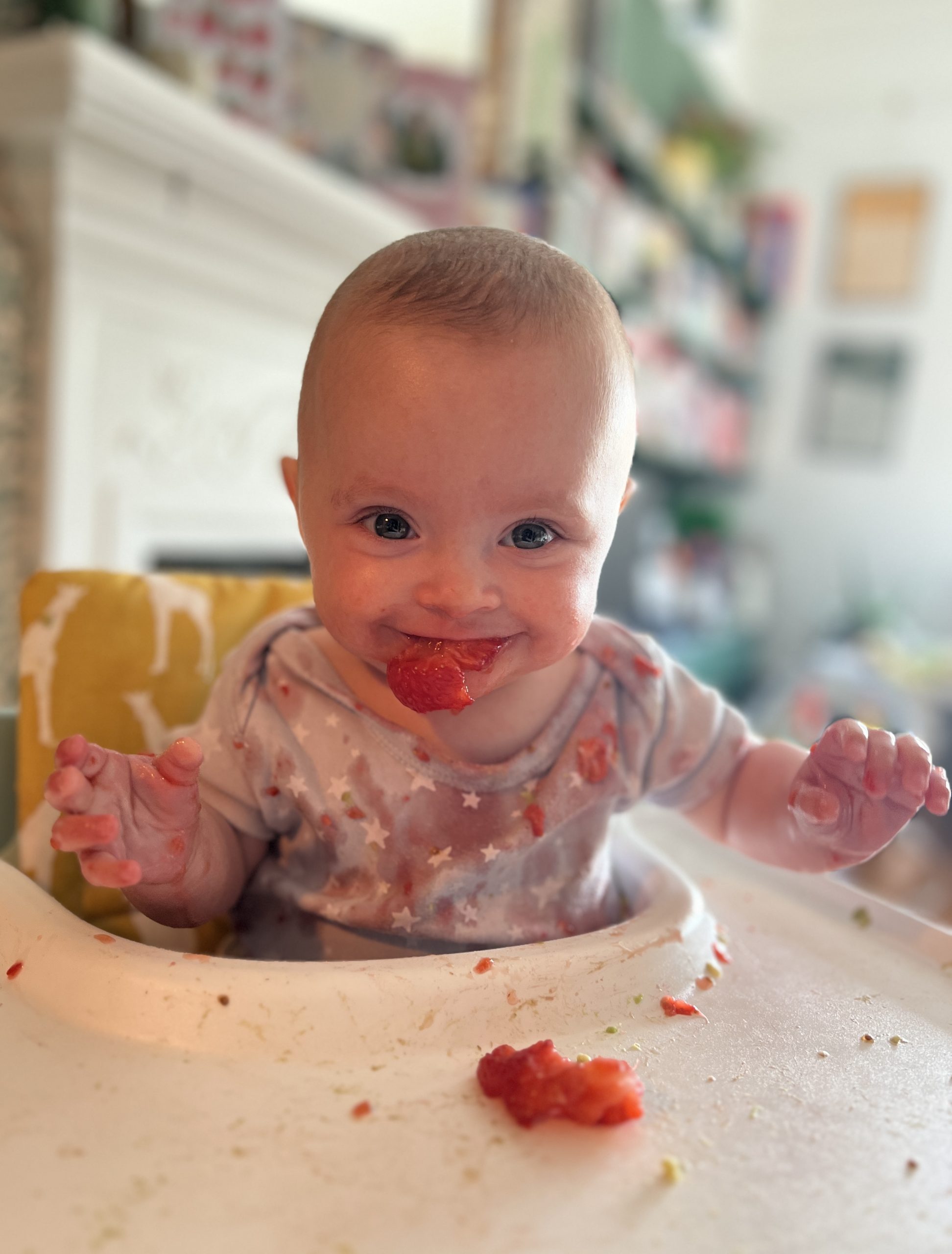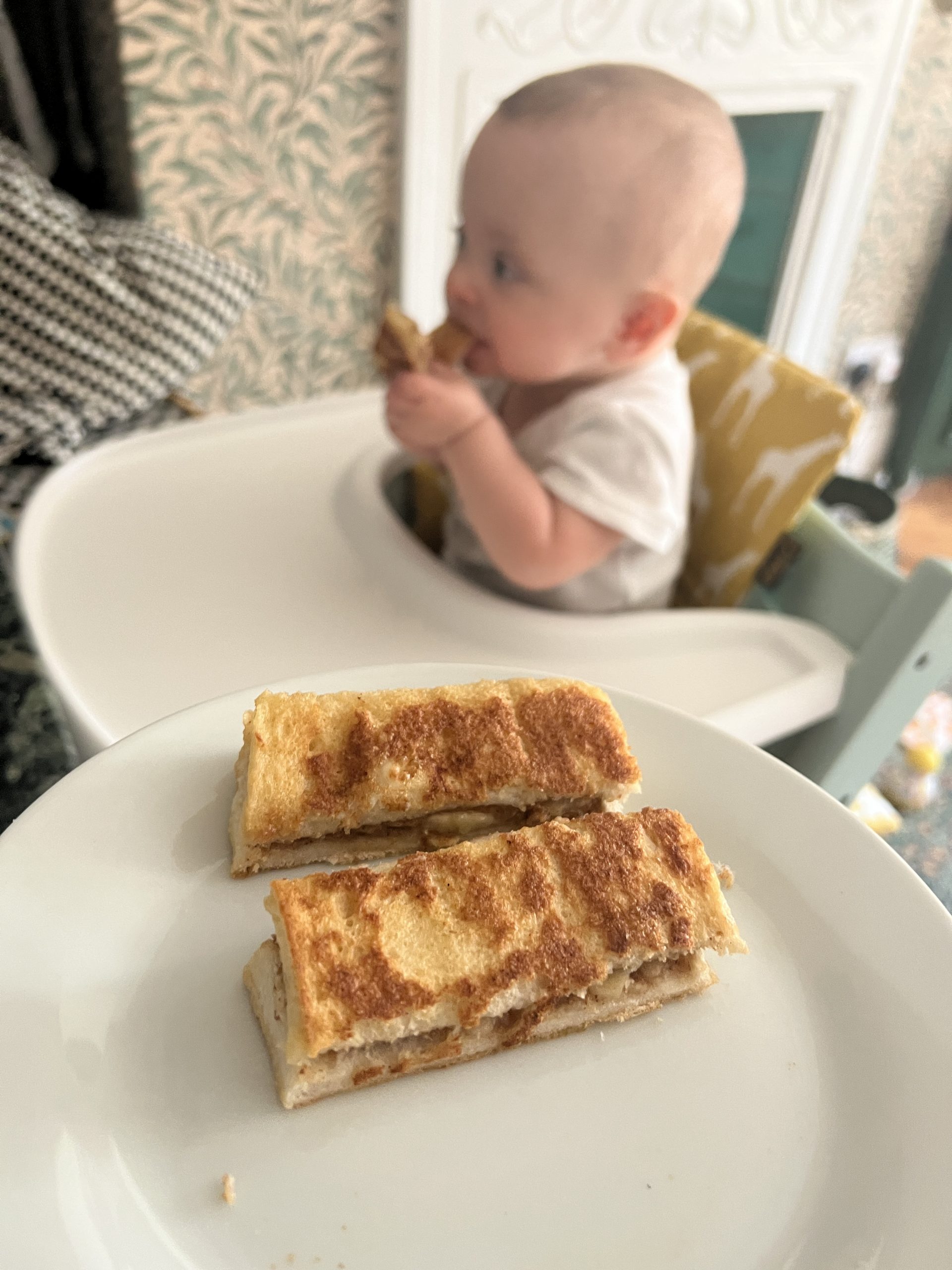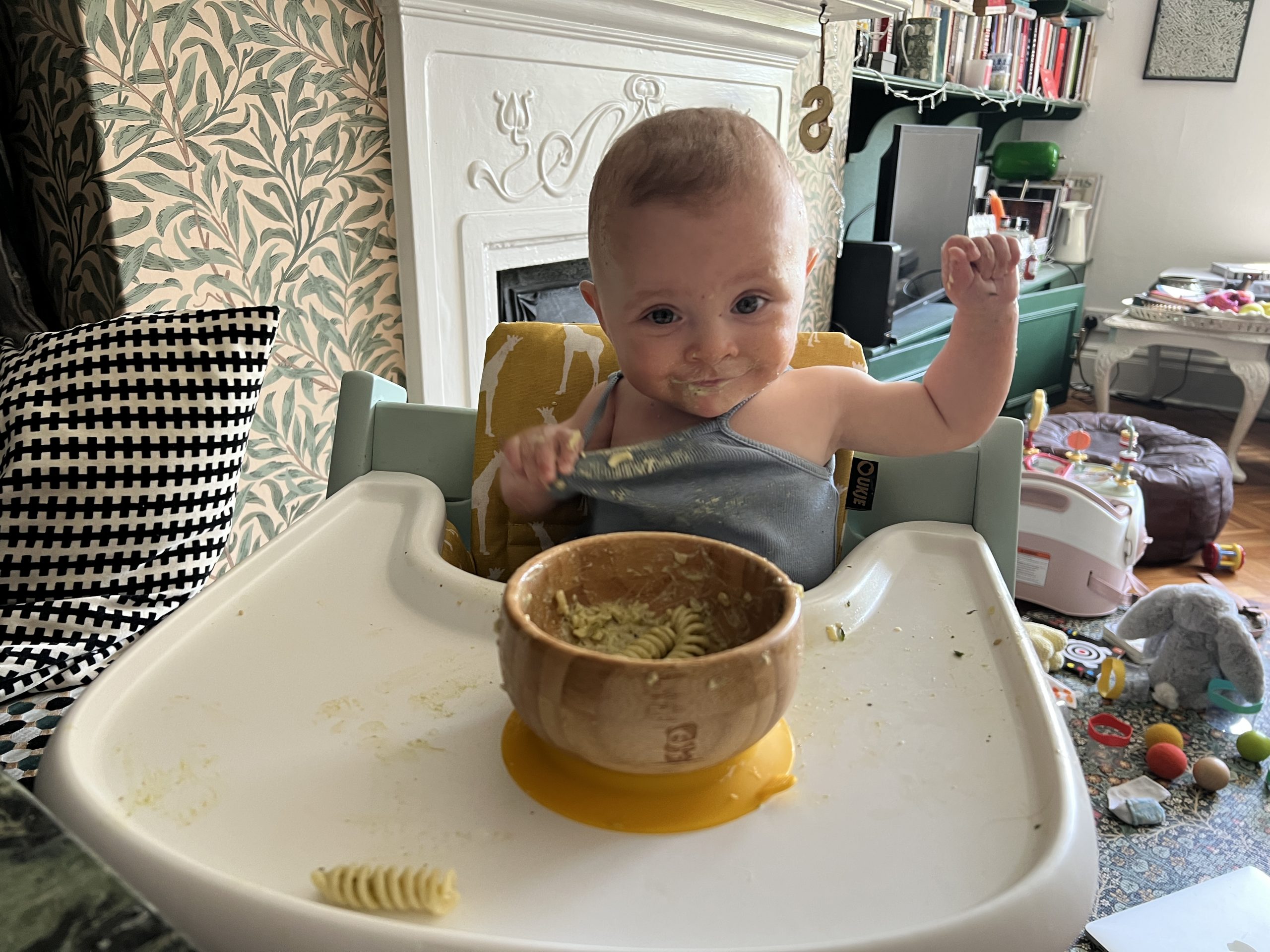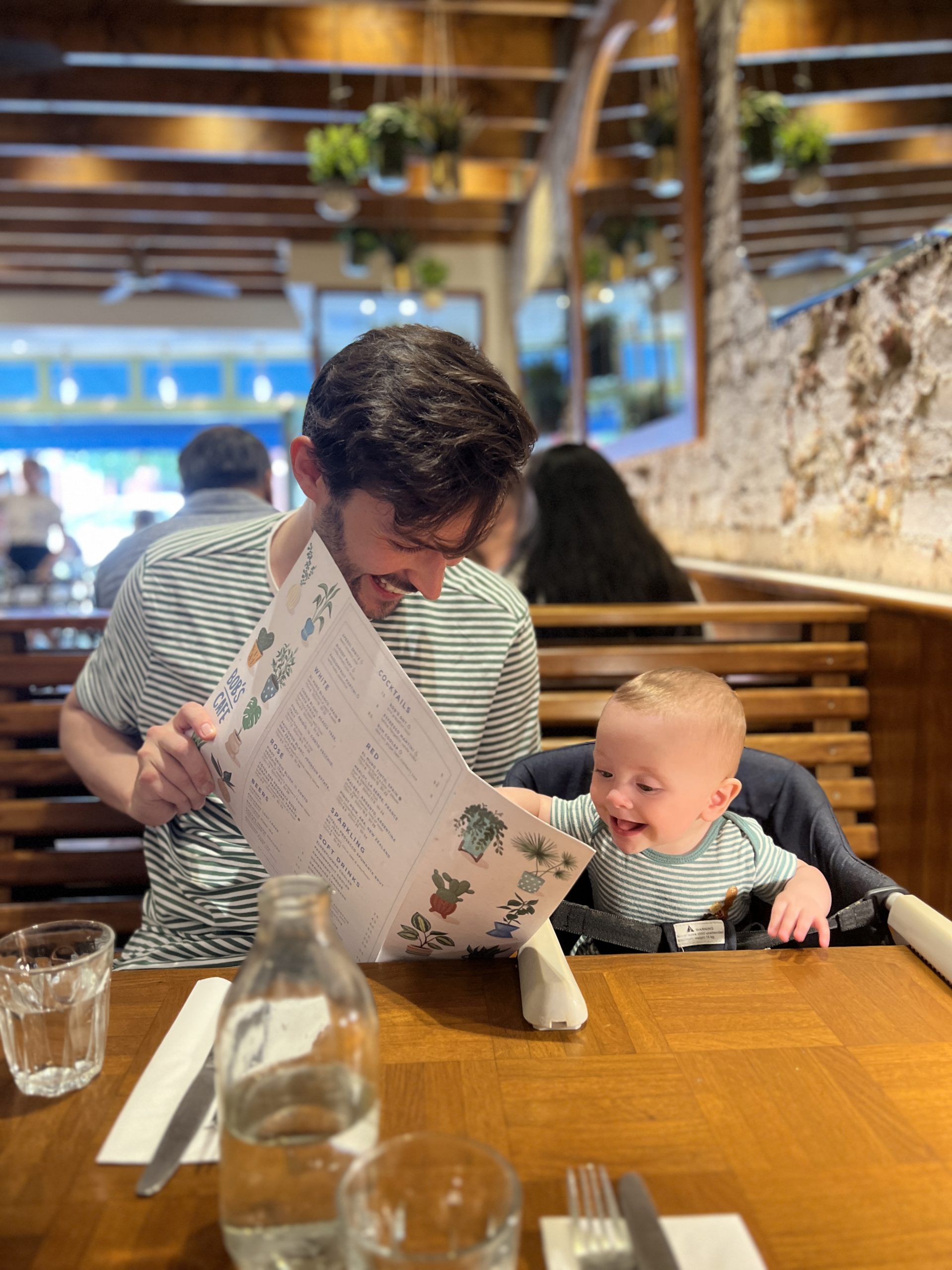This is a guest post by Sienna, my daughter.
My daughter Ophelia (still feels a bit weird saying that) is now 8 months old. She was born four weeks early by emergency C-section because that is when I suddenly developed severe pre-eclampsia. I went into hospital for a routine appointment, intent on battling for my right to a lovely water birth at whatever time my girl decided to come out. I left a few days later with a 4lb baby.
I didn’t know how much I wanted to breastfeed until I had her; the urge was shockingly powerful and yet the opposition I met from health professionals was almost equally so. Although I had plenty of colostrum (the thick, sticky first milk, dense with nutrients and antibodies), rather than support my feeding preference they forced us to give her formula top-ups and threatened to send her to NICU unless I complied. ‘They were following guidance for small babies, not looking at what was in front of them,’ the midwife at my birth debrief explained.
Despite our difficult start, Ophelia was exclusively fed with breastmilk after leaving the hospital (for the first four weeks via pumping and subsequently at the breast). I only achieved that thanks to a lot of support: my birth doula who became a post-natal one, hand-expressing my boobs for me in hospital (all vanity was lost at this point); a lactation consultant who offered much-needed reassurance; my mum, who made the most gorgeous Matar Paneer for me to eat in hospital; and my partner James, who slept on the hospital floor next to me, took his paternity leave plus all his annual leave at the start of Ophelia’s life, and for weeks fed our daughter every 3 hours each night while I pumped next to them.
When Ophelia reached 6 months, we began weaning. The term is misleading: before having a baby, I assumed due to the language used that they transitioned fully from milk to food at this point. In fact, a baby’s main source of nutrition must be milk (breast or formula) until the age of 1. ‘Weaning’ therefore simply means introducing solids.
Traditional weaning is what many people imagine when they think of babies eating their first foods: a parent spoon-feeding purée. But there is an alternative. We have chosen ‘baby-led weaning’ (BLW). This is when babies exclusively feed themselves – either with their hands or with pre-loaded spoons – and eat normal food, preferably whatever the adults are eating and at the same time.
Both approaches have pros and cons. Traditional can either be more effort or less than BLW, depending on whether you buy purée or make it yourself. A selling point often cited for BLW is that it is easier to simply give babies the same food you’re eating; the problem with this idea for our family is that we like salt, and the rule is no added salt until 2 years old. I’m simply not prepared to salt my pasta after I’ve cooked it – that’s barbaric. This means I must cook a little baby portion of pasta in a separate pan. BLW is also time-consuming because there is lots of cleaning up after a meal: Ophelia drops a lot of food, often likes to rub it on her head, and lets us know she is done by throwing bits over the side.
I’ve chosen BLW nonetheless because a) she’ll have to learn to chew at some point anyway, and I think it makes sense to do that early when intake doesn’t matter much, and b) there are lots of reported benefits. BLW advocates say babies are less likely to become picky eaters if they have control from the beginning over what they eat and how much, and they learn to stop eating when they’re full. It is good for the parent-child relationship not to have power struggles over food. BLW also gives them lots of opportunity to develop their motor and oral skills. Pre-baby, I never appreciated just how much work it can be to pick up food, put it in your mouth, break it down and swallow it.
Ophelia did quite a bit of gagging at first but rarely does now, and she has never choked. It is important to know the difference between gagging and choking when introducing solids. Also key is knowing that you should never stick your fingers in their mouth to retrieve food if you see them struggling, as this is more likely to cause choking. It might be uncomfortable to watch, but baby will figure out how to get the food out of their mouth. If food on the roof of their mouth won’t budge, hand them a spoon and they’ll quickly dislodge it.
It is a good idea to refrain from cleaning baby’s face until after the meal is over. They generally don’t like being cleaned up so it can put them off their food; plus, the mess is part of the sensory experience. To bib or not to bib? That is the question. We started out with bibs, but soon gave up in favour of multiple daily outfit changes. I found short-sleeved bibs best, but the BIBaDO ones we bought are so big (designed to fit 6 to 36 months) and she kept getting distracted by what she was wearing. The main disadvantage to our bib-less approach is that food falls in the gap between her and the tray. You can buy a Catchy. I don’t find it aesthetically pleasing enough so have decided to clean the floor after every meal instead.
If you’re a parent looking into weaning, you may hear of apps such as Solid Starts. Although their website has some good tips (the guide on how to introduce a straw cup worked brilliantly for us), their instructions for how to serve food is US-based and not considered proper BLW here in the UK. You might like to serve finger-shaped foods, but this is to make them easy for babies to pick up, not for reducing the risk of choking. The only hard BLW no-nos are whole nuts until 5 years, due to the high choking risk. Also, always slice grapes, cherry tomatoes, sausages lengthways, and squash blueberries.
So far Ophelia’s favourite food is fruit, especially strawberries. I even got her a strawberry hat to celebrate her love for them. She likes watermelon, kiwi, banana, too – all easy for babies to eat. Her standard breakfast is unsalted butter and peanut butter on crumpets, which she can get very enthusiastic about, I think because their signature holes mean crumpets score more highly on suckability than bread.

Ophelia eats a strawberry

Ophelia wears her strawberry hat
Our breakfasts include:
- Toast with peanut butter and banana
- Fried eggs and avocado on toast
- Melted cheese on toast with avocado (hers with mild cheddar as it’s less salty than mature)
- Cheesy omelette
- Toast topped with creamy, garlicky mushrooms
Our tiniest critic was not at all happy the first time we did banana pancakes but they were much better received on our second go. I should also admit that my laziest breakfast is when we have cereal she can’t have, so we give her yoghurt with mashed fruit mixed in. She loves to pick up the bowl and down this like a smoothie.

Ophelia eats French toast with peanut butter and banana
Lunch is often a tart – I love this super quick and cheaty meal. Just get some ready-made puff pastry, stick on some cheese and veg (courgette/peppers/tomatoes/asparagus), cover with olive oil, pepper, garlic powder (forgoing salt on baby’s section), and put it in the oven for 20 minutes. I serve finger-shaped slices, but lots of mums love to give pinwheels as they’re easy for young ones to hold.
Our other lunches include:
- Couscous with tuna, pesto, yoghurt and veg
- Pitta stuffed with avocado and hummus
- Mushroom stroganoff and rice
- Pasta (fusilli is easiest to grasp) with pesto and veg (e.g. green beans)
- Salmon fillet with broccoli/mushrooms/peppers and rice/mashed potato
- Tomato and mozzarella salad with pitta and hummus
We once gave Ophelia some tuna melt at a café and it was a massive hit. She has also recently enjoyed falafel wrap when we’ve eaten out. Our daughter didn’t take to pasta on the first few tries; fortunately, just as we were wondering whether there had been a mix-up at the hospital, she got the hang of it. I’ll often give her a bit of fruit at the end of lunch.

Ophelia eats pesto pasta with courgette
We haven’t introduced dinner yet. I’m not sure how we’ll manage to fit that in, with naps and playtime and bathtime to do. The recommendation is to aim for three meals by 1, and after 1 you can also add snacks.
I’m sure I could do a lot better on the nutrition front, but I’m not hugely worried at this stage because she doesn’t eat loads. We know she takes in some – those darkening, increasingly adult poos do not lie – but I’m not pretending she always polishes off the small portions we give her. She usually doesn’t. And the more effort I put into a meal, the less of it she will consume.
I used to despair at how little she ate, and sometimes doubted my decision to do baby-led weaning. The food waste is not exactly great for the environment either. I know, however – partly from reading the posts on Facebook group Baby Led Weaning UK – that it is common for babies to merely explore the textures and flavours of food at this stage. And she is steadily consuming more over time.
Plus, BLW is entertaining for us. When Ophelia shoves a whole strawberry in her mouth and keeps it there while grinning – which she does often – we love it. When she pops a clementine segment in, sucks all the moisture from it, then spits it out, sending it across the room, we look on, beaming proudly at her. We try to embrace the mess – she’ll only be a baby once.

Ophelia dines out, picking from the menu alongside Daddy




Love this article. Especially love the pictures. Can I come for homemade tart lunch? And the whole strawberries pushed into my mouth. 👶